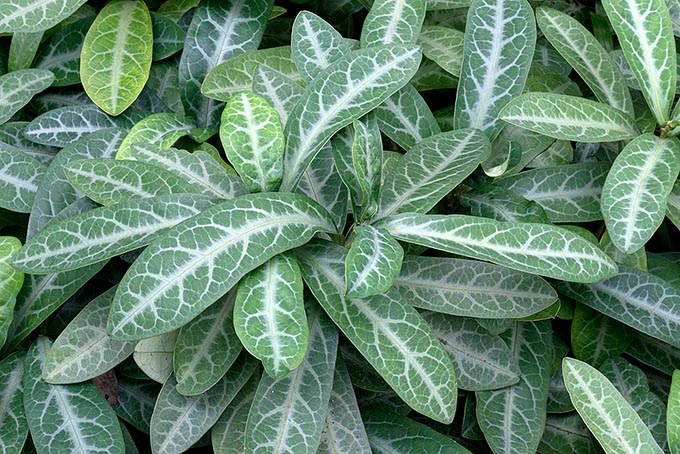Family : Phyllanthaceae

Text © Pietro Puccio

English translation by Mario Beltramini

Sauropus spatulifolius is a small 40 cm shrub native to Vietnam. Decorative leaves and medicinal virtues © G. Mazza
The name of the genus is the combination of the Greek substantives “σαῦρος” (sauros) = lizard, saurian and “πούς” (pus) = foot, due to the shape of the stamina that seems the footprint of a dinosaur; the specific name is the combination of the Latin diminutive “spatula” = small spatula and “folium” = leaf, with obvious reference.
Common names: dragon’s tongue (English); long lei ip, long li ye, lung li yah (Chinese); mayom bai phai (Thai).
The Sauropus spatulifolius Beille (1927) is an evergreen small shrub, stoloniferous, ramified at the base, up to about 40 cm tall, with wrinkly cylindrical branches, thin, often decumbent. The leaves, grouped at the apex of the branches on a 2-5 mm long pubescent glandulous petiole, are alternate, simple, oblong-obovate to spatulate with rounded apex and entire margin, 5-14 cm long and 2-6 cm broad, of green colour with greyish white veins, coriaceous. Inflorescences on short peduncle, directly on the branches (cauliflory) with clusters of 2-5 unisexual flowers on the same plant, fragrant. Male flowers, on a 3-5 mm long pedicel, of about 4 mm of diameter, without petals, with dark red to purple calyx formed by 6 obovate sepals, about 2 mm long and 1,5 mm broad, arranged in two verticils, and 3 stamina with the filaments united in a short cylinder. Female flowers, on a 1-2 mm long pedicel, of about 5 mm of diameter, similar to the male ones, with trilocular sub globose ovarium and 3 bifid styles at the apex. The fruit is a globose dehiscent capsule, of 6 mm of diameter, usually containing three triangular section seeds. It reproduces by seed, in loam rich of organic substance with addition of siliceous sand or agri-perlite per a 30%, to improve the drainage, maintained constanly humid at the temperature of 24-26 °C, and by division. Species of easy cultivation with ornamental foliage and perfumed flowers, utilizable in the gardens of the tropical and humid subtropical climate zones in mass, as ground cover and for borders; requires filtered sun light or partial shade and well drained soils maintained constantly humid.
It is often cultivated, in particular in southern China, for the dried leaves used in the popular medicine mainly for treating throat and bronchi ailments.
Excellent subject to cultivate in pot, for the decoration of luminous inner spaces, with lowest night temperatures never under the 16 °C and regular waterings during the vegetative period, more spaced in winter, but without ever allowing the substratum to dry up completely. The monthly fertilizations, in spring summer, are to be done with balanced products with microelements at half the dosage suggested by the producer.
Synonyms: Sauropus changianus S.Y.Hu.
→ To appreciate the biodiversity within PHYLLANTHACEAE family please click here.
